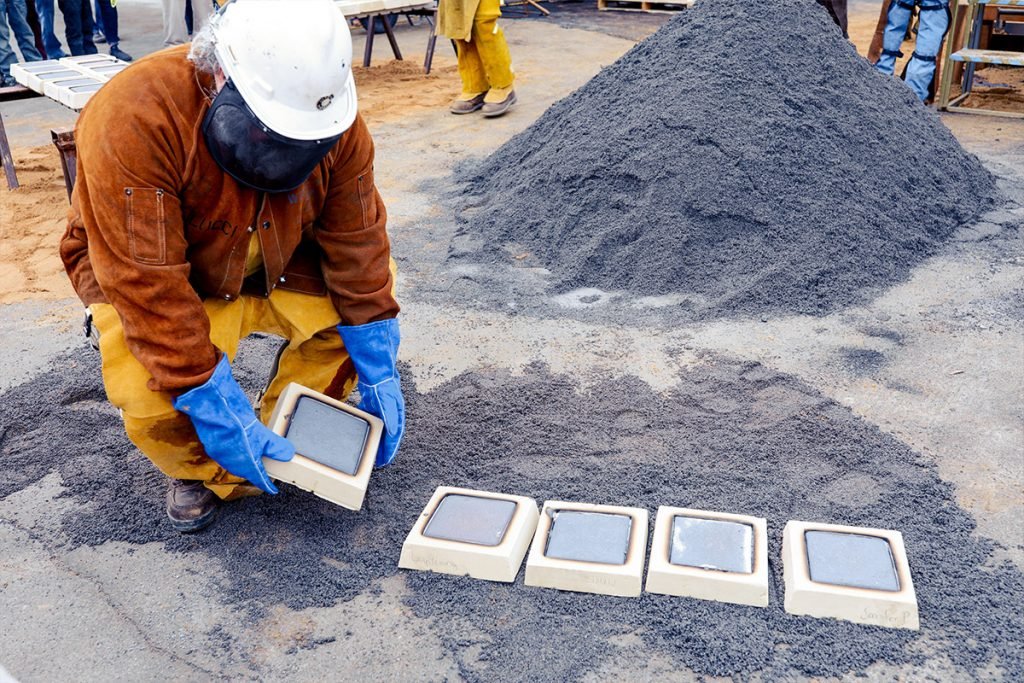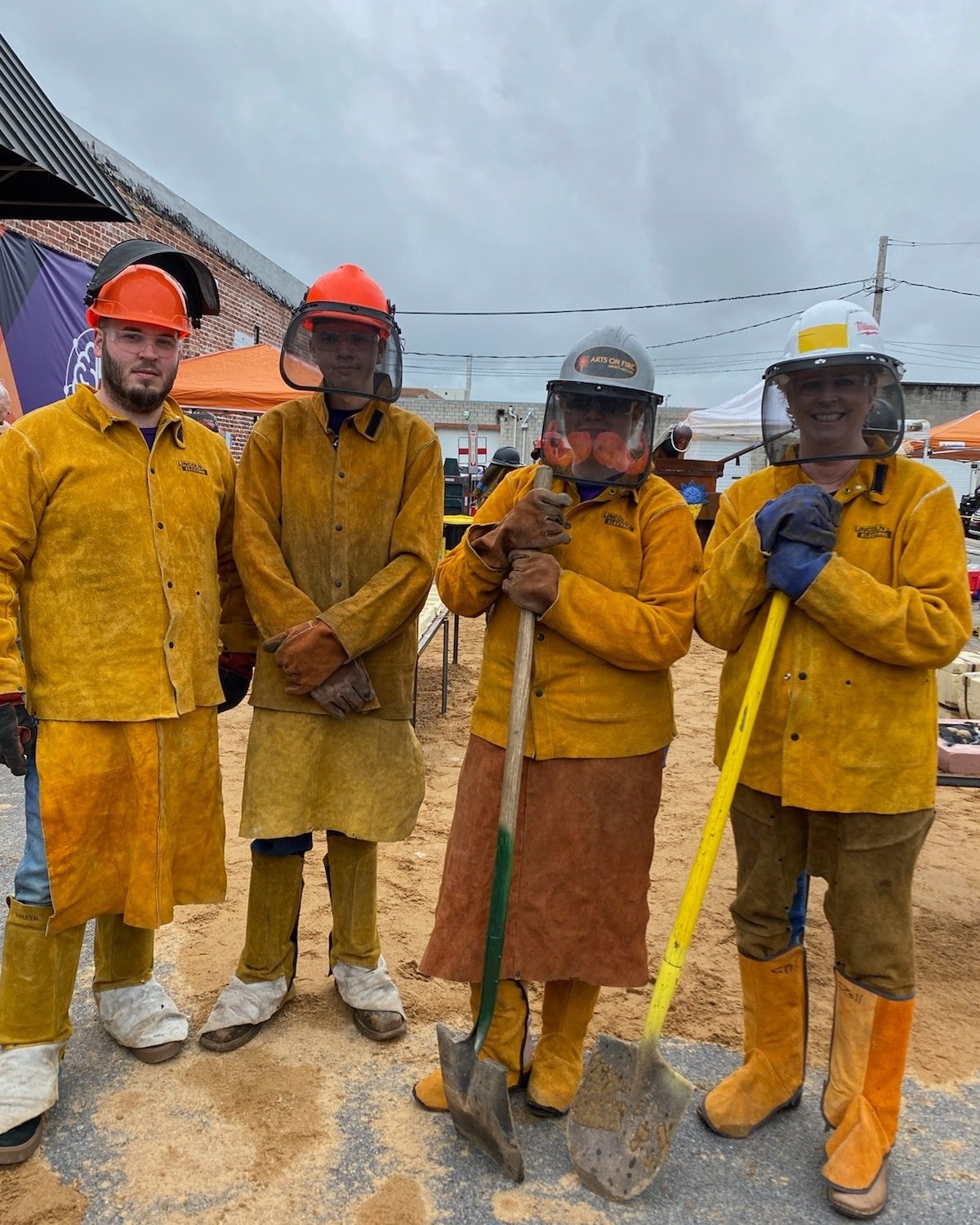Iron Pour 2022
It was toasty at the Iron Pour this year!
The Kingsport Office of Cultural Arts has organized this pour three times now, and we love to be a part of it by offering space for the workshops and pour.
The first step was the scratch mold workshops—even with 8 workshops available, they filled up fast. We are so glad that so many people were able to take part in the fun!
Scratch molds are made by compressing sand into a mold, which registrants then got to form with a variety of scraping tools. Everyone picked out a design, learned about the easiest ways to trace it, and then got to work.
Once the molds were made, we called in the experts!
Tripp Jarvis and his team drove down for the weekend to run the Iron Pour. As a fun surprise for our staff, we (from The Inventor Center and the Office of Cultural Arts) were invited to assist with the pour this year.
Here you can see them laying out the sand which will be important for everyone’s safety during the pour. It not only protects the pavement from scorch marks, but is also used to bury any drips of hot metal so that no one steps on them.
Let’s heat things up
Before we can pour, we need the molten metal! Here you can see the team charging the furnace with iron and coke—it takes a couple hours for the furnace to fully heat up.
You may also notice that everyone is now geared up. Anyone who is inside the danger zone must wear full leathers from head to toe, plus a face shield, as it is a dangerous process. Our staff received safety instructions to always face the metal, create a path for molten metal to roll right off of us rather than into the cuffs of our shoes, and more.
Time to pour!
An iron pour must be a well-oiled machine; there is someone in charge of the overall operation, a safety team, a furnace team, and a pour team.
The safety team uses shovels to keep the heat away from those pouring, as well as covering up any hot drips of metal that fall to the ground, and restocks the molds between pours.
The furnace team watches the furnace—charging it, clearing out the slag, and most importantly letting the lead know when it’s ready for another pour.
The pour team, well… pours. They hold the crucible, break open the hole that lets out the metal, and then plug it again quickly once the crucible is full. Then, any impurities are skimmed off the top before pouring. The crucible, with metal in it, is about 150 pounds—-quite the workout!
Finally, the castings are ready to pick up!
Once the molds are all poured, the experts empty the furnace out onto the sand, take the castings out of their molds, and hose them down.
After the castings all cooled down, they are washed and scrubbed off, and any sharp edges are ground down.
It was an honor to be so involved in the process this year, we had so much fun!
We hope that you will join us the next time!








